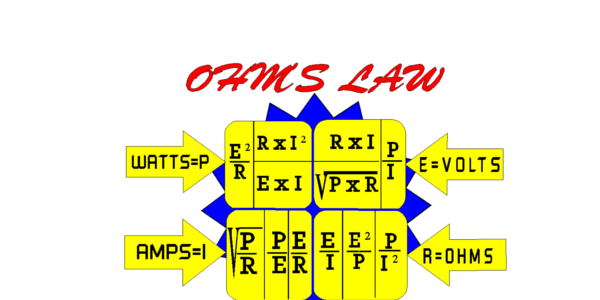Preparing For The CNIM Test: Constant Voltage Vs. Constant Current
During your CNIM test prep, you might have come across some questions on stimulation parameters. Here’s a quick overview of constant current and constant voltage as used during intraoperative neuromonitoring.
Image from http://bit.ly/ZcU0EF
Constant Voltage (measured in Volts):
The problem with using constant voltage is that it’s really never constant. There’s a wider range or variation in current delivered due to a certain amount of internal impedance. If this impedance wasn’t there, then the constant voltage is constant. But that’s not the case. If you can keep your electrode impedance low (say 3 kilohms), and internal impedance low (say 1 kilohm), the amount of variation due to the total impedance is negligible.
Where constant voltage shines is the fact that you can use it in dry and wet fields with very similar results. That’s very helpful if stimulating neural tissue saturated in CSF or blood. So if I was stimulating brain matter or peripheral nerves, the constant voltage might have the upper hand.
Constant Current (measured in Amperes):
The problem with stimulating with constant current is a limitation to the output you can deliver. Voltage is the product of current and impedance (Using Ohm’s law… or V = I X R… or Volts = Current X Resistance). This may not matter at low levels (1 Volt at 10 kilohms impedance requires only 10 mA of current… or 1 volt = 10,000 Ohm X 0.001 Amperes ). But if using something like tcMEP, you may need to go up to 800-1,000 Volts at lower impedance levels. You can play around with the numbers, but you’ll see that the amount of mA needed to match that kind of voltage is more than what your stimulation box will even allow you to do. On high stimulation modalities, like motor evoked potentials, you’re limited to voltage due to your machines inability to stimulate that many milliamperes (and just so you know… the FDA first cleared the Digitimer D185 for motor evoked potentials, which uses Volts. This is what the commercial tcMEP devices are built around, and for a good reason. Don’t try to build something in your garage).
Image from http://bit.ly/111iEon
Another thing to consider is constant current does not deal as well with shunting due to fluid around the area of stimulation. When areas fluctuate in the amount of fluid present, like before and after the PA suctions around a nerve or as CSF flows over the brain or spinal cord, the range of current shunted through the neural structure you’re stimulating is not desirable.
Where constant current is helpful is when there are levels of impedance change. If you’re more worried about fluctuations in impedance and not as much about shunting (like stimulating pedicle screws or over the skin for SSEP), then constant current is better than constant voltage.
Constant Current Vs. Constant Voltage: The Debate Continues (and so does the confusion during CNIM test prep)
While transcranial motor evoked potentials might be limited to constant voltage, it’s not so clear for all modalities.
For example, some authors, like Kartush, believe that constant current and a flush-tipped probe is better for stimulating nerves due to changes in impedance, while others, like Moller, are more worried about shunting. Authors like Happel use constant voltage when lifting peripheral nerves out of the exposure site with j-hook electrodes. Lifting the nerve out of the wet field and into the dry air + using constant voltage = really concerned about shunting.
Knowing the strength and weakness of both constant current and constant voltage will better help you make your own decision when stimulating. And it might even help you answer a question or two on the CNIM exam.
For more info to help with your CNIM test prep… here’s a video on the introduction to constant current and constant voltage…
Keep Learning
Here are some related guides and posts that you might enjoy next.
How To Have Deep Dive Neuromonitoring Conversations That Pays Off…
How To Have A Neuromonitoring Discussion One of the reasons for starting this website was to make sure I was part of the neuromonitoring conversation. It was a decision I made early in my career... and I'm glad I did. Hearing the different perspectives and experiences...
Intraoperative EMG: Referential or Bipolar?
Recording Electrodes For EMG in the Operating Room: Referential or Bipolar? If your IONM manager walked into the OR in the middle of your case, took a look at your intraoperative EMG traces and started questioning your setup, could you defend yourself? I try to do...
BAER During MVD Surgery: A New Protocol?
BAER (Brainstem Auditory Evoked Potentials) During Microvascular Decompression Surgery You might remember when I was complaining about using ABR in the operating room and how to adjust the click polarity to help obtain a more reliable BAER. But my first gripe, having...
Bye-Bye Neuromonitoring Forum
Goodbye To The Neuromonitoring Forum One area of the website that I thought had the most potential to be an asset for the IONM community was the neuromonitoring forum. But it has been several months now and it is still a complete ghost town. I'm honestly not too...
EMG Nerve Monitoring During Minimally Invasive Fusion of the Sacroiliac Joint
Minimally Invasive Fusion of the Sacroiliac Joint Using EMG Nerve Monitoring EMG nerve monitoring in lumbar surgery makes up a large percentage of cases monitored every year. Using EMG nerve monitoring during SI joint fusions seems to be less utilized, even though the...
Physical Exam Scope Of Practice For The Surgical Neurophysiologist
SNP's Performing A Physical Exam: Who Should Do It And Who Shouldn't... Before any case is monitored, all pertinent patient history, signs, symptoms, physical exam findings and diagnostics should be gathered, documented and relayed to any oversight physician that may...








Great sketch of the guys. Thanks for info. Like your style . Liz